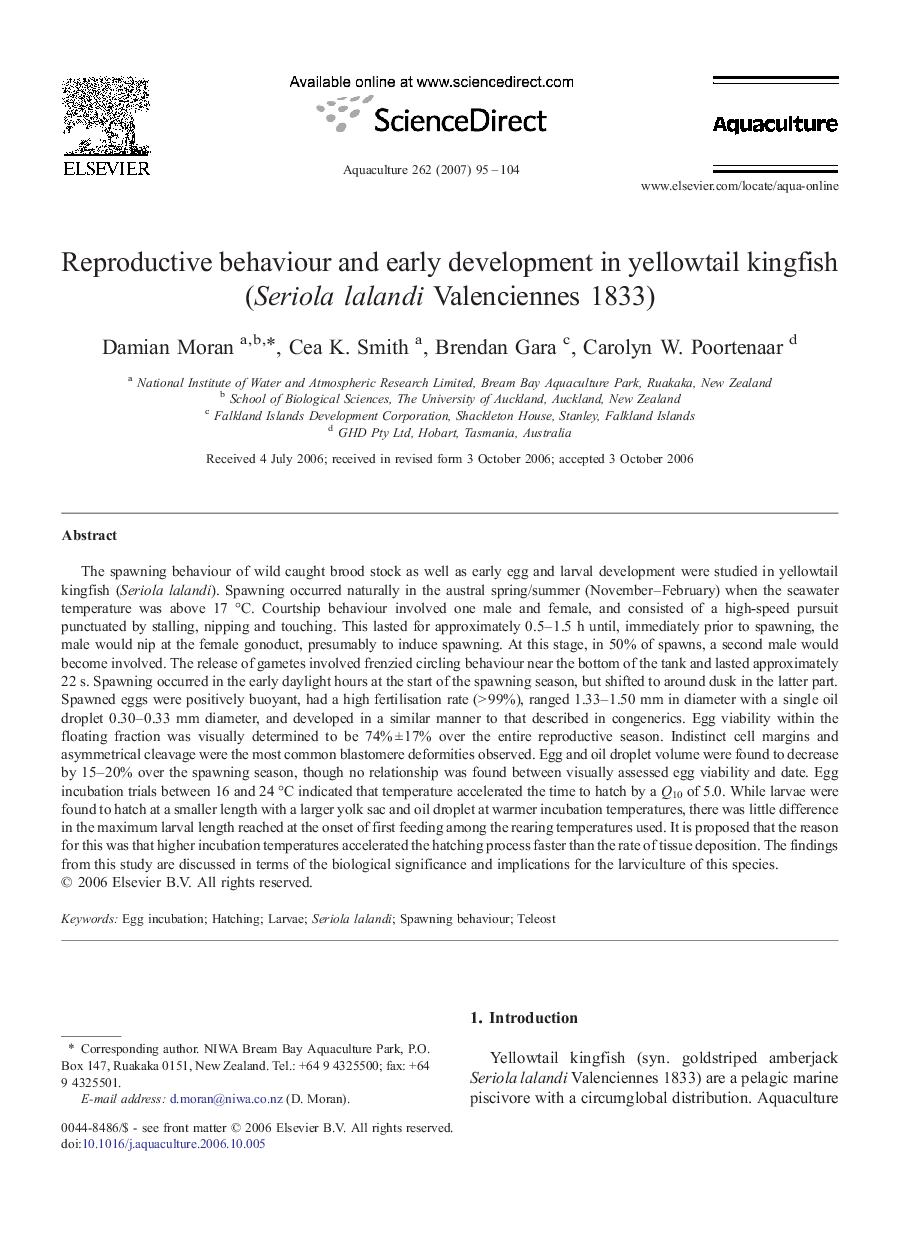| Article ID | Journal | Published Year | Pages | File Type |
|---|---|---|---|---|
| 2425702 | Aquaculture | 2007 | 10 Pages |
The spawning behaviour of wild caught brood stock as well as early egg and larval development were studied in yellowtail kingfish (Seriola lalandi). Spawning occurred naturally in the austral spring/summer (November–February) when the seawater temperature was above 17 °C. Courtship behaviour involved one male and female, and consisted of a high-speed pursuit punctuated by stalling, nipping and touching. This lasted for approximately 0.5–1.5 h until, immediately prior to spawning, the male would nip at the female gonoduct, presumably to induce spawning. At this stage, in 50% of spawns, a second male would become involved. The release of gametes involved frenzied circling behaviour near the bottom of the tank and lasted approximately 22 s. Spawning occurred in the early daylight hours at the start of the spawning season, but shifted to around dusk in the latter part. Spawned eggs were positively buoyant, had a high fertilisation rate (> 99%), ranged 1.33–1.50 mm in diameter with a single oil droplet 0.30–0.33 mm diameter, and developed in a similar manner to that described in congenerics. Egg viability within the floating fraction was visually determined to be 74% ± 17% over the entire reproductive season. Indistinct cell margins and asymmetrical cleavage were the most common blastomere deformities observed. Egg and oil droplet volume were found to decrease by 15–20% over the spawning season, though no relationship was found between visually assessed egg viability and date. Egg incubation trials between 16 and 24 °C indicated that temperature accelerated the time to hatch by a Q10 of 5.0. While larvae were found to hatch at a smaller length with a larger yolk sac and oil droplet at warmer incubation temperatures, there was little difference in the maximum larval length reached at the onset of first feeding among the rearing temperatures used. It is proposed that the reason for this was that higher incubation temperatures accelerated the hatching process faster than the rate of tissue deposition. The findings from this study are discussed in terms of the biological significance and implications for the larviculture of this species.
